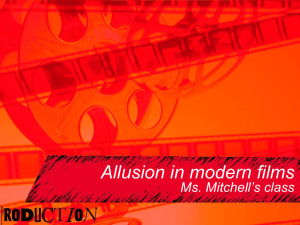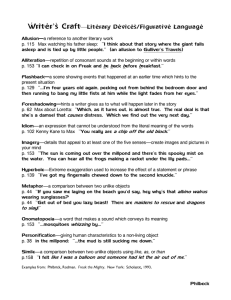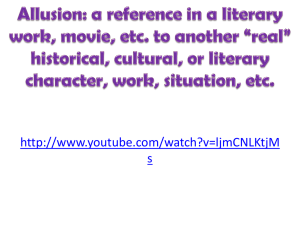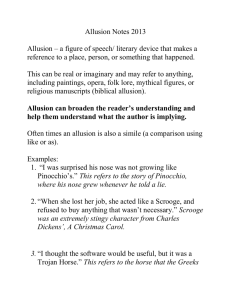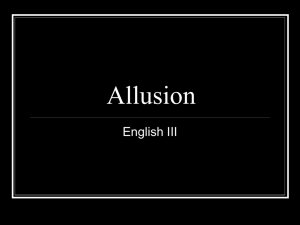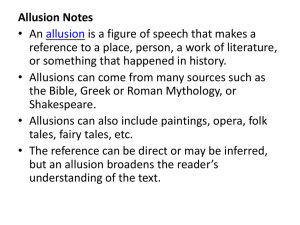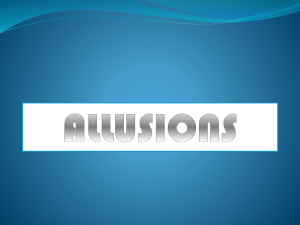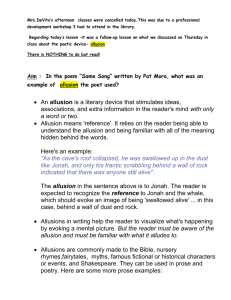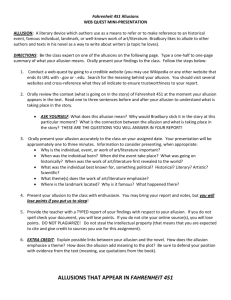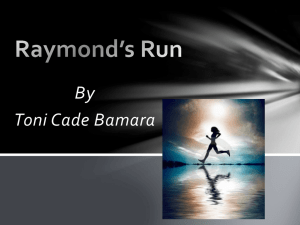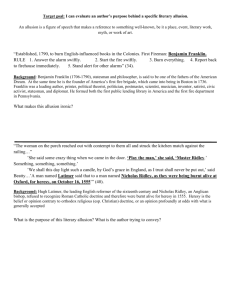Allusions p.200 - Aurora City School District
advertisement
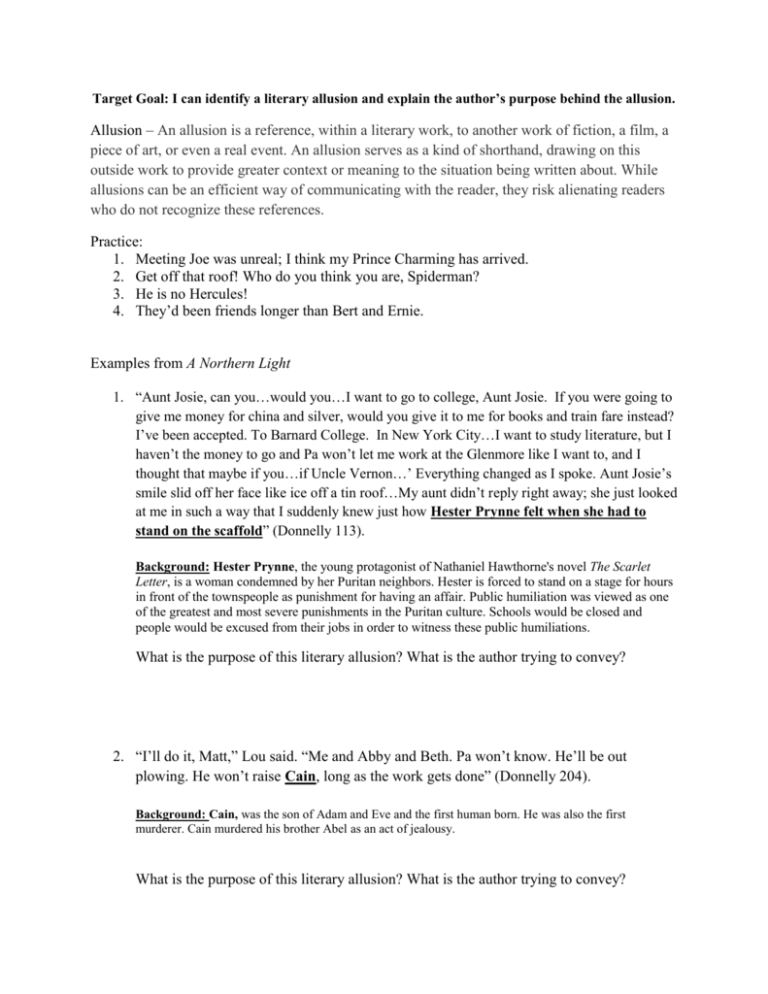
Target Goal: I can identify a literary allusion and explain the author’s purpose behind the allusion. Allusion – An allusion is a reference, within a literary work, to another work of fiction, a film, a piece of art, or even a real event. An allusion serves as a kind of shorthand, drawing on this outside work to provide greater context or meaning to the situation being written about. While allusions can be an efficient way of communicating with the reader, they risk alienating readers who do not recognize these references. Practice: 1. Meeting Joe was unreal; I think my Prince Charming has arrived. 2. Get off that roof! Who do you think you are, Spiderman? 3. He is no Hercules! 4. They’d been friends longer than Bert and Ernie. Examples from A Northern Light 1. “Aunt Josie, can you…would you…I want to go to college, Aunt Josie. If you were going to give me money for china and silver, would you give it to me for books and train fare instead? I’ve been accepted. To Barnard College. In New York City…I want to study literature, but I haven’t the money to go and Pa won’t let me work at the Glenmore like I want to, and I thought that maybe if you…if Uncle Vernon…’ Everything changed as I spoke. Aunt Josie’s smile slid off her face like ice off a tin roof…My aunt didn’t reply right away; she just looked at me in such a way that I suddenly knew just how Hester Prynne felt when she had to stand on the scaffold” (Donnelly 113). Background: Hester Prynne, the young protagonist of Nathaniel Hawthorne's novel The Scarlet Letter, is a woman condemned by her Puritan neighbors. Hester is forced to stand on a stage for hours in front of the townspeople as punishment for having an affair. Public humiliation was viewed as one of the greatest and most severe punishments in the Puritan culture. Schools would be closed and people would be excused from their jobs in order to witness these public humiliations. What is the purpose of this literary allusion? What is the author trying to convey? 2. “I’ll do it, Matt,” Lou said. “Me and Abby and Beth. Pa won’t know. He’ll be out plowing. He won’t raise Cain, long as the work gets done” (Donnelly 204). Background: Cain, was the son of Adam and Eve and the first human born. He was also the first murderer. Cain murdered his brother Abel as an act of jealousy. What is the purpose of this literary allusion? What is the author trying to convey? 3. Mattie: “I don’t like any of the boys around here.” Miss Wilcox: “Why not?” Mattie: “I suppose it’s hard to like anyone real after Captain Wentworth and Colonel Brandon…Jane Austin ruins you for farm boys and loggers…” (Donnelly 201). Background: British novelist Jane Austin wrote romantic literature in the late 1700’s and early 1800’s. Captain Wentworth and Colonel Brandon were two romantic heroes from her books. Both were noble, brave, charming and considered real gentlemen. What is the purpose of this literary allusion? What is the author trying to convey? Overall, why is it fitting that Mattie’s character uses so many allusions?
